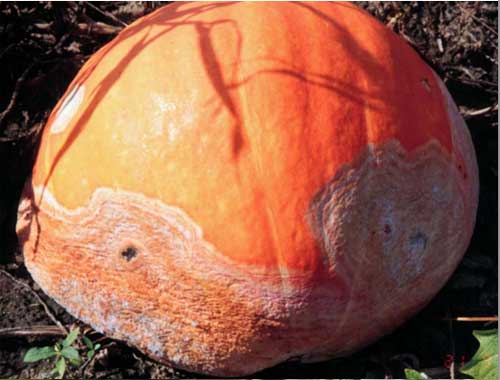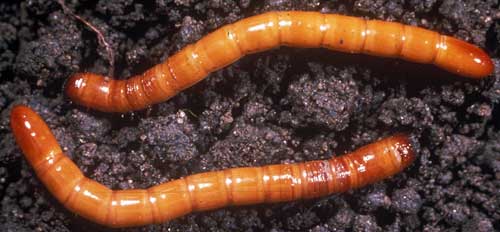Understanding pest life cycles is critical for vegetable cropping success
Vegetable growers understand the life cycle of their crops, but understanding pest life cycles and host preference is another important ingredient to success. Learn how to be successful at the Jan. 24 Pumpkin and Watermelon Workshop.
Successful vegetable production is not a simple cycle of working the ground, planting the crop and reaping an abundant harvest. Success in today’s market depends on growers knowing not only the plant’s life cycle, but the life cycle of the weed, disease and insect pests common to their crop. Knowing the life cycle of a pest allows growers to control it at the most vulnerable point in the cycle, or possibly avoid it all together.
A common disease problem for cucurbit and solanaceous crop growers is Phytophthora capsici (Photo 1). The same Phytophthora species attacks all commercial members of these crops. This is important to know when it comes to rotation practices. Growers should never follow cucurbits with cucurbits, but they also shouldn’t follow cucurbits with a solanaceous crop.

Photo 1. Phytophthora capsici on pumpkin.Photo credit: Dr. Mary Hausbeck, MSU
But it doesn’t stop there. The same Phytophthora species infects a broad range of commercial crop and weed species and knowing potential hosts and non-hosts is important for rotation scheduling. Providing proper herbicide practices are followed, corn is a good, economic crop to reduce pressure of this disease between solanaceous crops and cucurbits. For more information on managing Phytophthora in cucurbits, read the Michigan State University Extension bulletinManaging Phytophthora on Winter Squash and Pumpkin.
There are also some insects such as wireworms (Photo 2) that infest several crop species. Wireworms are the larval stage of click beetles and are often found feeding on corn seed and roots of young corn plants, but they can be serious problems on carrots, potatoes, beans and other crops. So what makes a good rotation partner for one pest and crop combination may not be good for another. This is all the more reason for growers to understand pest life cycles and potential hosts. With some foresight, rotations can be planned that reduce pressure of the most significant pests and diseases, increasing plant health and reducing the need for costly pesticide applications.]

Photo 2. Wireworm larvae. Photo credit: Frank Peairs, Colorado State University, Bugwood.org
Pumpkin and watermelon growers wanting to know more about production of these two crops should attend MSU Extension’s Pumpkin and Watermelon Workshop on Jan. 24, 2013, at the Camden Missionary Church Outreach Center, 611 West Bell Street, Camden, Mich. (view map). The workshop will cover production basics as well as diseases, insects, varieties, marketing and food safety practices. The cost is $60 per person and includes refreshments, lunch and a notebook. Those interested must be registered by Jan. 11, 2013. A flyer with registration information and directions is available online.



 Print
Print Email
Email

